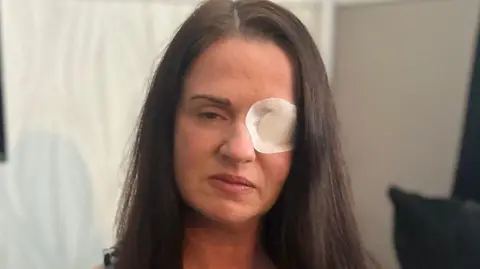In a troubling and disturbing case from County Durham, a woman named Kaylie Bailey faced severe health consequences after receiving an illegal Botox-type treatment administered by a beautician, Gemma Gray. This incident has raised significant alarms regarding the safety and regulation of cosmetic procedures in the UK. The authorities have acted swiftly to investigate the situation while raising public awareness about the risks associated with unregulated cosmetic treatments.
Kaylie Bailey, a 36-year-old mother, underwent what she thought was a routine beautification procedure—receiving what she believed to be Botox injections at the cost of £75, significantly lower than usual rates. Unfortunately, this seemingly advantageous deal turned out to be perilous. Shortly after the injections, Bailey began experiencing alarming symptoms. Initially misdiagnosed with ptosis, a drooping of the upper eyelid, her condition worsened, prompting her to seek further medical attention.
At Sunderland Royal Hospital, doctors eventually diagnosed her with botulism, an extremely rare and potentially deadly condition caused by a bacterium. At that point, Bailey was one of at least 28 individuals in Northeast England who were diagnosed with botulism after similar anti-wrinkle treatments. The severity of her condition was highlighted by her near-resuscitation and subsequent three-day stay in the Intensive Care Unit, where she was treated with an anti-toxin.
During her recovery, Bailey’s experience took an emotional toll; she recounted the terrifying moments when she realized her life was in jeopardy. With a patch now covering her left eye, the reminders of her ordeal linger. She reached out to Gray, who dismissed responsibility by alleging that the problems with the product were widespread, a claim for which no evidence has surfaced. Bailey expressed disbelief and shock, emphasizing how Gray’s reckless decisions had irrevocably impacted her life and the lives of others.
A parallel story emerged in the case of another victim named Paula Harrison, whose experience mirrored Bailey’s ordeal. Having previously visited Gray for a lip filler procedure, Harrison opted for what she believed to be Botox and filler treatments. Soon after the procedure, she found herself hospitalized with botulism, requiring treatment and a four-day stay. Harrison described experiencing throat constriction, rendering her unable to eat, while she lamented the risk Gray posed to her clients.
Gemma Gray, who operated her business known as Belissimo Aesthetics, injected a product called Toxpia—a treatment not authorized for use in the UK. Despite seven legitimate products available for use and extensive training and regulations in place for administering Botox, Gray chose to utilize an illegal alternative to save costs or increase profits. This decision not only defies legal regulations but endangers the lives of those seeking aesthetic treatments. Despite attempts to bring Gray to accountability, she rebuffed media inquiries regarding her actions.
This alarming situation has prompted the UK Health Security Agency to investigate the outbreak. Their initiative seeks to guide potential clients of cosmetic procedures toward qualified and licensed practitioners, underscoring the importance of carefully researching the products and methods employed in aesthetic treatments. Furthermore, the Department of Health and Social Care has recognized the pressing issue of inadequately trained individuals operating in the cosmetic sector, emphasizing the government’s intention to enforce new regulations.
The cases of Bailey and Harrison serve as cautionary tales. As they bravely share their experiences, the need for stringent regulatory measures in the cosmetic industry has never been clearer. Authorities hope to prevent future tragedies while advising individuals considering similar treatments to prioritize their health and safety. As these women reclaim their lives, they highlight the paramount importance of transparent and safe procedures in the pursuit of beauty.
In conclusion, the incidents involving Kaylie Bailey and Paula Harrison are profound examples of the dangers individuals can face when seeking cosmetic enhancements from unlicensed or unqualified practitioners. Such scenarios not only damage the lives of individuals but also call into question the broader regulatory environment concerning cosmetic procedures in the UK. As investigations continue, it is imperative that the industry recognizes and addresses these critical health risks.











